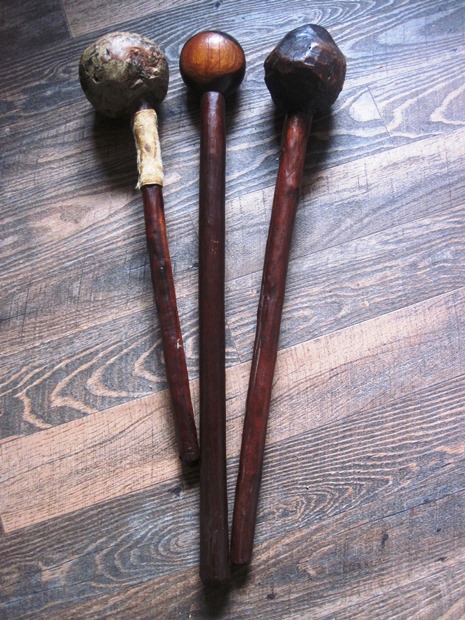

 The South African
The South African
Author Shiloh Noone - received by e-mail in September 2019
The twist in the Knobkerrie story, courtesy of Matshana Museum Onrust River Overberg

Some kieries in the museum's collection
It is this wood that was used to make the deadly Knobkerrie (Iwisa) that was used with extreme velocity by the Zulus against Queen Victoria’s troops in 1879, its roots with the San, later the Nguni. For years Christie’s and various Lords of the Manor have paraded the snake-shaft Knobkerrie as an authentic Anglo Zulu War artifact, basically the shaft a twisted snake with gaping holes of air in-between. These were sold off by the Zulus as tourist items in the early 1910 period before The Great War when teams of British tourists came to pay their respects to those that had fallen during 1879. (My late grandmother remembered well.) These Snake knobkerries would shatter at first contact due to the weak shaft.
Another tourist item was a knobkerrie where the neck is coiled copper wire to strengthen the weakness of having two separate pieces, the shaft insert into the ball.
Sadly many of these were also sold off at auctions as the real McCoy; they were never used in the Anglo Zulu War, again the weakness of two separate pieces. The Zulu craftsmen knew well to hide this flaw and did it well, as a mere 5 shillings in 1910 could feed a Zulu family for a week.
The ironwood Knobkerrie, sometimes spherical for throwing which was used in the Anglo Zulu War, can only be whittled down from a single piece. When I say whittled, chip-carved, no knife could whittle that wood as sure as no man could (braai) barbecue that wood without running for a very wet bushy release. These exaggerations like the hallowed letter claiming that the bodies of the British soldiers of Isandlwana reflected a golden sheen and were in good condition after a few days would never be corrected, due to English pride and the preserved sanctity of what they want to believe, notwithstanding the pounds already paid for such items. In hindsight the month of January in the Rorke’s drift area of Natal, 70 degrees in the shade, a bleeding body, would already have vultures descending, jackals and hyenas circling, we're talking 1879, notwithstanding a few leopards, enough said.
Return to Journal Index OR Society's Home page
South African Military History Society / scribe@samilitaryhistory.org